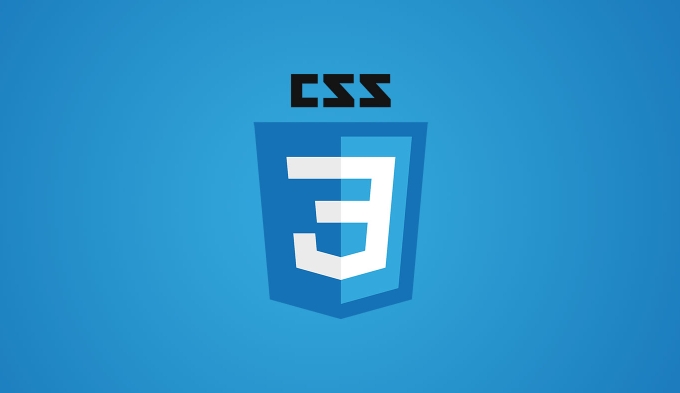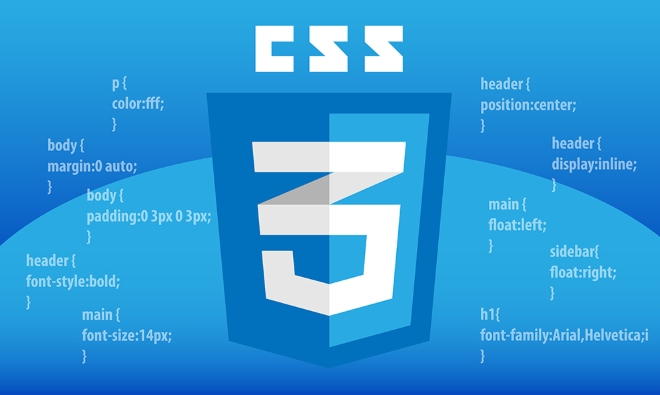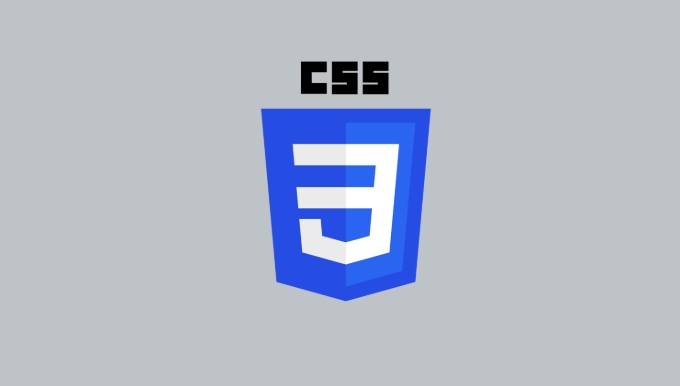To create responsive images using CSS, it can be mainly achieved through the following methods: 1. Use max-width: 100% and height: auto to enable the image to adapt to the container width while maintaining proportions; 2. Use HTML's srcset and sizes attributes to intelligently load image sources to adapt to different screens; 3. Use object-fit and object-position to control image cropping and focus display. Together, these methods ensure that the images are presented clearly and beautifully on different devices.

sure! Here is a practical article about "How to Create Responsive Images with CSS" written as you ask:

Several practical methods to implement responsive pictures with CSS
In web design, it is a basic requirement to enable pictures to be displayed well on different devices. To do this, the key is to enable the picture to automatically resize and scale according to the screen size. Actually, this is not difficult, you only need to master a few core CSS skills.
1. Use max-width: 100% and height: auto
This is the most basic and most commonly used responsive image setting method. Its purpose is to allow the image to scale adaptively within the container width while maintaining the original aspect ratio.

img {
max-width: 100%;
height: auto;
}After setting this way, no matter how large the image is, it will automatically shrink to adapt to the width of the parent element without being stretched and deformed.
Note: If you change width: 100% and height: auto to this combination, the effect is similar, but max-width is recommended, because this can prevent the image from accidentally enlarging beyond the original size and avoid blur or distortion.

2. Combined with srcset and sizes attributes (combined with HTML CSS)
Although pure CSS cannot fully control the selection of image source files, we can use srcset and sizes attributes in HTML to work with CSS to achieve smarter responsive image loading.
For example:
<img src="/static/imghw/default1.png" data-src="small.jpg" class="lazy" srcset="small.jpg 480w, medium.jpg 800w, large.jpg 1200w" sizes="(max-width: 600px) 100vw, 50vw" alt="Example Picture" />
This code means:
- The browser will select the appropriate image source based on the current viewport width.
- When the screen is less than 600px, the picture takes up the entire viewport width; otherwise it takes up half.
- This not only ensures clarity but also saves bandwidth.
When using with CSS, it is still recommended to retain max-width: 100%; height: auto; mentioned above to ensure the stable layout.
3. Image cropping and focus control: use object-fit and object-position
Sometimes we want the picture to display part of the content under a specific size, such as avatar, cover image, etc. At this time object-fit and object-position can be used to control the display method of the image.
Common values include:
-
object-fit: cover: Scale and crop to scale, suitable for background or cover. -
object-fit: contain: display the picture in full, with white space around it. -
object-positioncan adjust the focus of the cropped area, such asobject-position: top center.
Example:
img.hero {
width: 100%;
height: 300px;
object-fit: cover;
object-position: center 30%;
}This allows the focus of the image to always be centered or aligned to a certain position, improving the visual experience.
Basically that's it. The core idea of responsive pictures is to make the pictures "smartly" adapt to different screens, rather than forcibly full or fixed. As long as you master these key points, you can deal with most scenarios.
The above is the detailed content of How to create responsive images using CSS?. For more information, please follow other related articles on the PHP Chinese website!

Hot AI Tools

Undress AI Tool
Undress images for free

Undresser.AI Undress
AI-powered app for creating realistic nude photos

AI Clothes Remover
Online AI tool for removing clothes from photos.

Clothoff.io
AI clothes remover

Video Face Swap
Swap faces in any video effortlessly with our completely free AI face swap tool!

Hot Article

Hot Tools

Notepad++7.3.1
Easy-to-use and free code editor

SublimeText3 Chinese version
Chinese version, very easy to use

Zend Studio 13.0.1
Powerful PHP integrated development environment

Dreamweaver CS6
Visual web development tools

SublimeText3 Mac version
God-level code editing software (SublimeText3)

Hot Topics
 What is 'render-blocking CSS'?
Jun 24, 2025 am 12:42 AM
What is 'render-blocking CSS'?
Jun 24, 2025 am 12:42 AM
CSS blocks page rendering because browsers view inline and external CSS as key resources by default, especially with imported stylesheets, header large amounts of inline CSS, and unoptimized media query styles. 1. Extract critical CSS and embed it into HTML; 2. Delay loading non-critical CSS through JavaScript; 3. Use media attributes to optimize loading such as print styles; 4. Compress and merge CSS to reduce requests. It is recommended to use tools to extract key CSS, combine rel="preload" asynchronous loading, and use media delayed loading reasonably to avoid excessive splitting and complex script control.
 What is Autoprefixer and how does it work?
Jul 02, 2025 am 01:15 AM
What is Autoprefixer and how does it work?
Jul 02, 2025 am 01:15 AM
Autoprefixer is a tool that automatically adds vendor prefixes to CSS attributes based on the target browser scope. 1. It solves the problem of manually maintaining prefixes with errors; 2. Work through the PostCSS plug-in form, parse CSS, analyze attributes that need to be prefixed, and generate code according to configuration; 3. The usage steps include installing plug-ins, setting browserslist, and enabling them in the build process; 4. Notes include not manually adding prefixes, keeping configuration updates, prefixes not all attributes, and it is recommended to use them with the preprocessor.
 How can you animate an SVG with CSS?
Jun 30, 2025 am 02:06 AM
How can you animate an SVG with CSS?
Jun 30, 2025 am 02:06 AM
AnimatingSVGwithCSSispossibleusingkeyframesforbasicanimationsandtransitionsforinteractiveeffects.1.Use@keyframestodefineanimationstagesforpropertieslikescale,opacity,andcolor.2.ApplytheanimationtoSVGelementssuchas,,orviaCSSclasses.3.Forhoverorstate-b
 What is the conic-gradient() function?
Jul 01, 2025 am 01:16 AM
What is the conic-gradient() function?
Jul 01, 2025 am 01:16 AM
Theconic-gradient()functioninCSScreatescirculargradientsthatrotatecolorstopsaroundacentralpoint.1.Itisidealforpiecharts,progressindicators,colorwheels,anddecorativebackgrounds.2.Itworksbydefiningcolorstopsatspecificangles,optionallystartingfromadefin
 What is the scope of a CSS Custom Property?
Jun 25, 2025 am 12:16 AM
What is the scope of a CSS Custom Property?
Jun 25, 2025 am 12:16 AM
The scope of CSS custom properties depends on the context of their declaration, global variables are usually defined in :root, while local variables are defined within a specific selector for componentization and isolation of styles. For example, variables defined in the .card class are only available for elements that match the class and their children. Best practices include: 1. Use: root to define global variables such as topic color; 2. Define local variables inside the component to implement encapsulation; 3. Avoid repeatedly declaring the same variable; 4. Pay attention to the coverage problems that may be caused by selector specificity. Additionally, CSS variables are case sensitive and should be defined before use to avoid errors. If the variable is undefined or the reference fails, the fallback value or default value initial will be used. Debug can be done through the browser developer
 CSS tutorial focusing on mobile-first design
Jul 02, 2025 am 12:52 AM
CSS tutorial focusing on mobile-first design
Jul 02, 2025 am 12:52 AM
Mobile-firstCSSdesignrequiressettingtheviewportmetatag,usingrelativeunits,stylingfromsmallscreensup,optimizingtypographyandtouchtargets.First,addtocontrolscaling.Second,use%,em,orreminsteadofpixelsforflexiblelayouts.Third,writebasestylesformobile,the
 CSS tutorial for creating loading spinners and animations
Jul 07, 2025 am 12:07 AM
CSS tutorial for creating loading spinners and animations
Jul 07, 2025 am 12:07 AM
There are three ways to create a CSS loading rotator: 1. Use the basic rotator of borders to achieve simple animation through HTML and CSS; 2. Use a custom rotator of multiple points to achieve the jump effect through different delay times; 3. Add a rotator in the button and switch classes through JavaScript to display the loading status. Each approach emphasizes the importance of design details such as color, size, accessibility and performance optimization to enhance the user experience.
 What is the :target pseudo-class and how can it be used?
Jun 22, 2025 am 12:48 AM
What is the :target pseudo-class and how can it be used?
Jun 22, 2025 am 12:48 AM
CSS's :target pseudo-class is used to style the target element based on the URL fragment identifier. It works by the browser scrolling to the element when the URL contains a # symbol and element id and allows a specific style to be applied to the element via :target. Common use cases include highlighting the page section after navigation, creating tabs or slideshows without JavaScript, and improving accessibility to long pages. Usage tips include ensuring that id is unique, combining transition or animation effects, switching content visibility with display attributes, and considering compatibility with older browsers.






